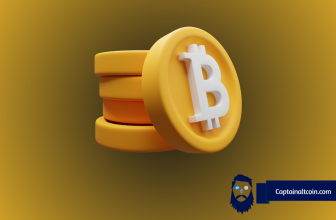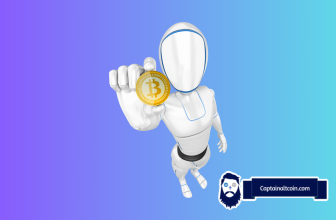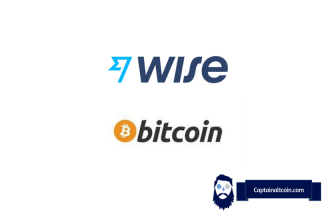What you'll learn 👉
Table Of Contents
Still got no bitcoin!, Trade with Bitcoin now! Internet advertisements are flooded with similar topics.
We have all probably heard about Bitcoin on social media, financial news and magazines. It is getting more and more popular over the years,but most people think it is confusing and a small number of people know how to make Bitcoins, how to pay with Bitcoins and how to spend it. Beside that there are some questions that everyone would like to know the answer :How to make something out of nothing?, How can we make money out of mathematical calculations? The answer is quite complicated, for ordinary people, if they are not familiar with political economy. If we simplify the answer, Bitcoin is like paper money it doesn’t have a value on its own, but its value is made on the global market and on the perception that it is worth something.
What is Bitcoin?
Bitcoin is an international digital or crypto-currency in other words digital money, it is made and guarded electronically, but it is not printed or controlled by anyone i.e.decentralized, which is its main characteristic and difference from other currencies. Bitcoin is independent from the institutions that control world’s macroeconomy.
Where do the bitcoins come from?
Under a pseudonym Satoshi Nakamoto, a web developer created Bitcoin in 2009. Numerous attempts have been made in order to find out the true identity of Bitcoin’s creator.His true identity is still unknown.
Bitcoin is a product of Sitoshi’s idea, which was, to create a currency that will be decentralized and independent. Bitcoin currency works on a mathematical principle of evidence.
Nakamoto wrote a computer programme in order to enter new Bitcoins and it produced about 21 million Bitcoins and this number is also a limit of Bitcoins, there are about 16 million in existence today. This fact, doesn’t minimize the value of the Bitcoin currency, on the contrary, every Bitcoin has a much higher value because of this limit. Bitcoins are divided into a smaller parts and the smallest part ‘’ Satoshi’’is named after its inventor. There is a number of pages on the Internet, where you can change your Bitcoins for real money. Bitcoin compared to the regular money has a detailed history, which makes it hard to fake or replicate. Supposedly year 2140. will be the year of the last mined Bitcoin.

Where do new Bitcoins come from?
Every Internet user can become a member of this network. In order to get a Bitcoin you have to take few steps: downloading a Virtual wallet, start with Bitcoin mining, spending Bitcoins etc.
All around the world people use a computer program or algorithm that follows mathematical formula for producing Bitcoins and every transaction must be verified by this decentralized computer network known as miners. One of the interesting features of Bitcoin transactions is that you cannot be forced to pay nor you can take back a transaction. Miners get Bitcoins as reward for solving certain mathematical problem.
The reward Bitcoins, are not in circulation and they come from this network programming. Grouped transactions are called ‘’blocks ‘’.
Miners task is to solve the algorithm and add it to the existing blocks making a so called blockchain.The first miner who solves the algorithm reveals it to the other miners who agree if it is valid or not and then they connect it to the blockchain. The miner who solved the algorithm gets a Bitcoin reward, which is the only way to get Bitcoins.
What do you need to start mining? One or more computers with strong graphic cards, specialized device for solving algorithms and that’s all. You can start making Bitcoins in fact your computer is taking part in making Bitcoins together with other computers. In some cases there is a chance that you don’t get anything because of other stronger computers and servers and a lot of people who are also trying to get a piece for themselves, this is the reason you why miners should join a group. These groups of people are called the Pool. The most famous pool is Slush.
Bitcoin mining rewards
The block reward is the only way that new Bitcoins are created on the network, as Satoshi said in his post recently:
Coins have to get initially distributed somehow, and a constant rate seems like the best formula.
Miners race each other to complete the work.
The Bitcoin block reward refers to new Bitcoins distributed by the network to miners for each successfully solved block.
At the beginning Bitcoin rewards were 50 Bitcoin per block, but they were cut in half and they will continue to decrease until all the Bitcoins are in use.
Block reward decreasing cut miners’ earnings 50 %, assuming the same Bitcoin price before and after the halving. Approximate block halving dates are known so most miners take block reward halvings into account before they happen. Currently the block reward is 12 Bitcoins, and that Bitcoins go to the miner whose machine was the winner. There is a winner every 10 minutes, 25 Bitcoins are generated in 10 minutes. Powerful machines that mine take a lot of power so the miner’s electricity bill increases. People who want to save electricity can use another way to mine. It’s called cloud mining. In this type of mining you pay to use someone else’s network, but it cuts down your earnings.
If we get back to the original way of mining, chances of winning a reward are getting more and more difficult with more competition. This also demands new equipment and upgrades every couple of months because Bitcoin network changes roughly every two weeks. If you have a stronger computer and if you help more in generating Bitcoin you will get larger part of the same Bitcoin. Each time the problem is solved, the next one is more difficult. The problems get harder as coins are mined but also a rate of production slows down.
In spite of all ups and downs Bitcoin currency made an important impact on worlds’ financial network. There are a lot of interesting facts about Bitcoin.Value of Bitcoin in early 2010., a year after its launch was 4 cents or 2 pennies but a single Bitcoin in November 2013. became more valuable than an ounce of gold.






